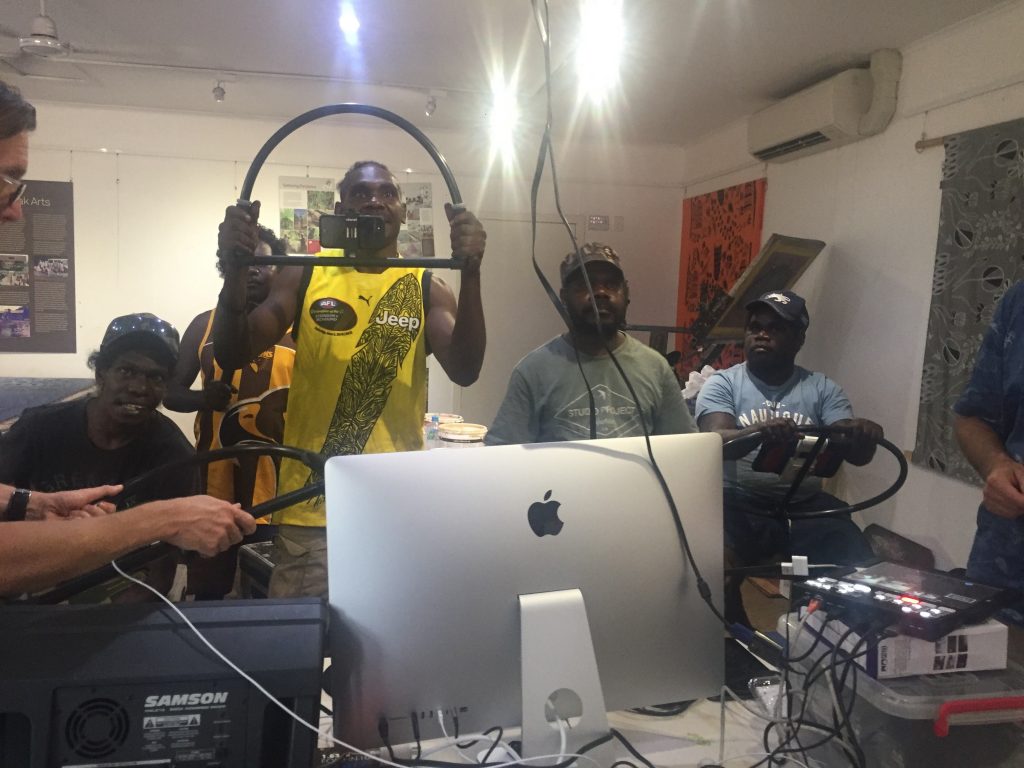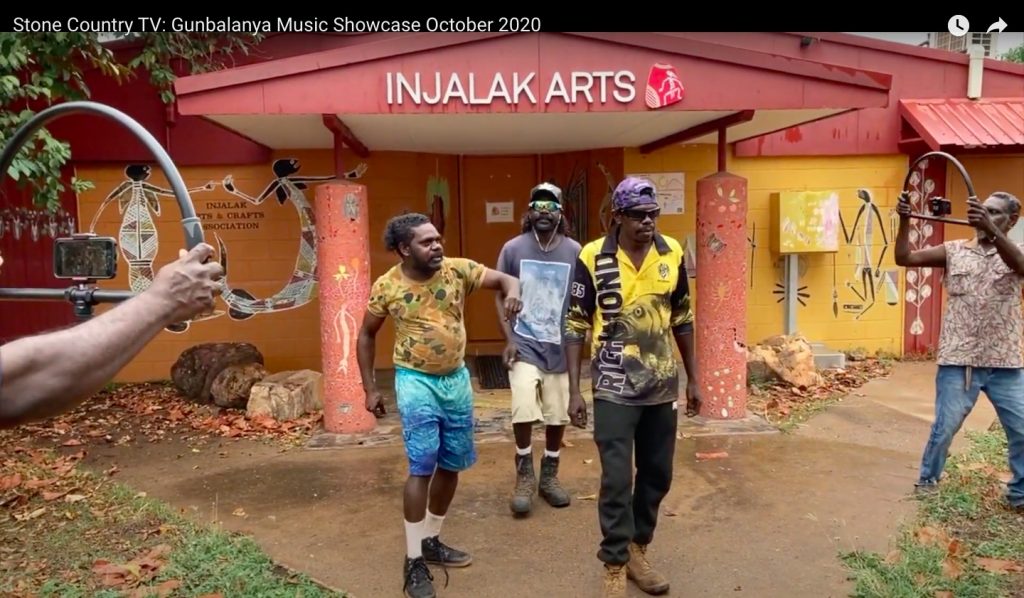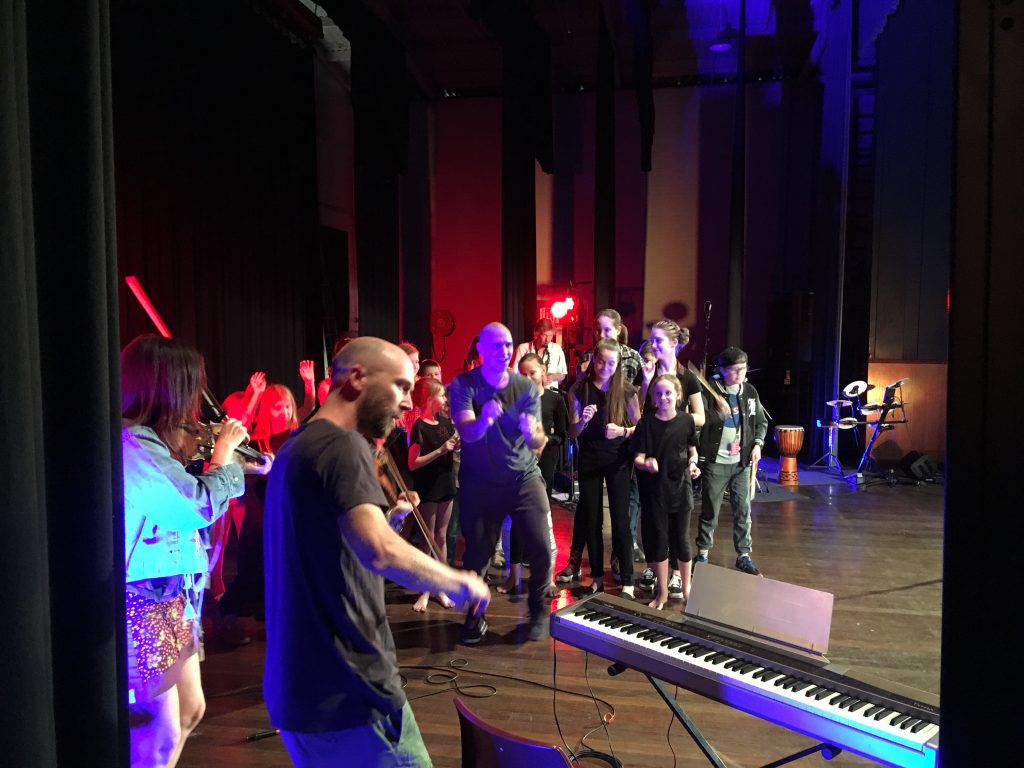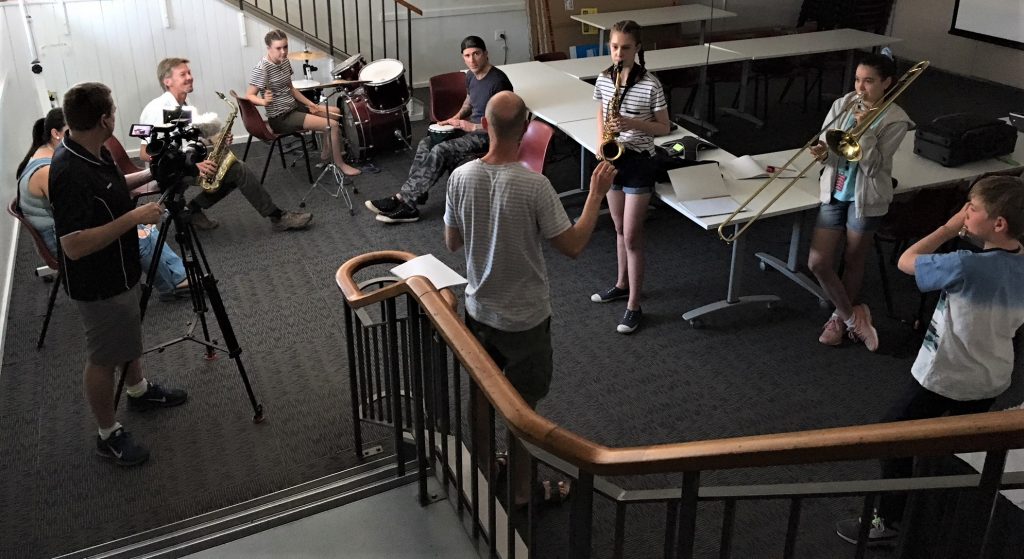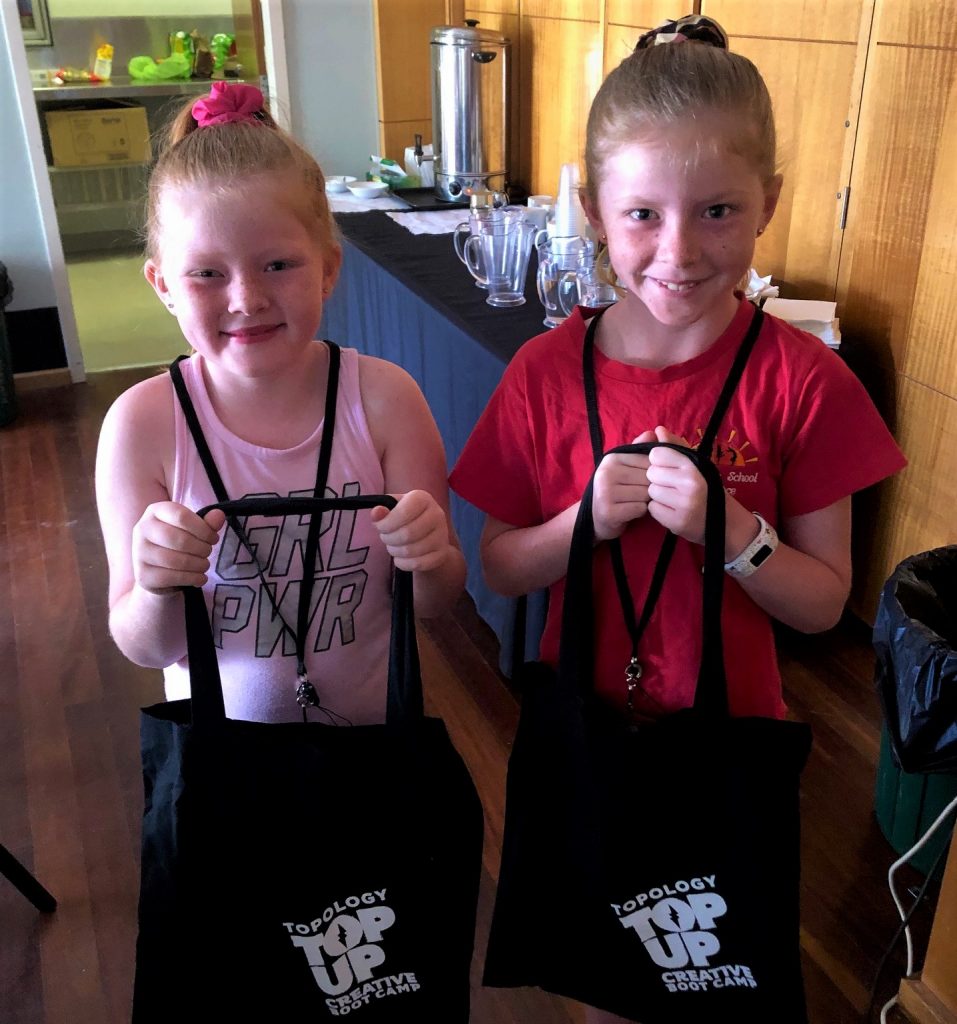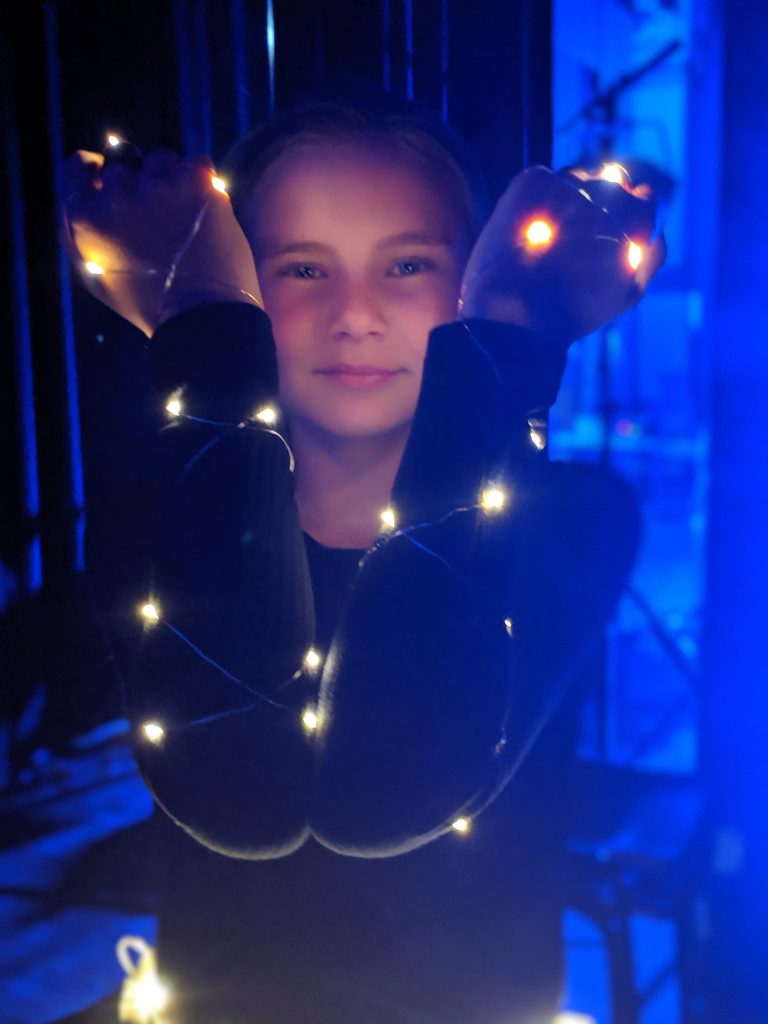Foundation for Rural & Regional Renewal (FRRR)
The traditional owners of Gunbalanya is the Gumurdul family who allow Injalak to operate on their land and are actively supportive of the art centre.
About 500 km from Darwin, you can find the region of Arnhem Land, in the Northern Territory. For six months of the year, you can cross the East Alligator River to Gunbalanya. For the remainder of the year, the river is too high, cutting Gunbalanya and the 1,200 people that live there, off from the rest of the country.
Like many First Nations communities, Gunbalanya is rich with culture and heritage, with a strong desire to pass on this traditional knowledge, particularly among young people. Indigenous community art centres play an important role in the artistic and cultural life of traditional Aboriginal artists living in remote communities.
Gunbalunya’s Injalak Arts centre in West Arnhem Land supports over 350 Indigenous Kunwinjku artists. They provide professional development programmes, workshops, mentoring support and On Country trips to collect art materials. Pre-COVID times, thousands of tourists would visit Injalak Arts every year to witness the art, music, natural environment, and many other culturally significant activities.
In the midst of COVID restrictions, with no visitors to the region allowed, Injalak Arts ran a two-week music workshop and a week-long live video production workshop that involved local musicians recording and rehearsing songs, as well as coaching and mentoring for eight members of the newly formed Media Unit who learnt all about live production. Thanks to a $10,000 Strengthening Rural Communities grant, funded by the Tim Fairfax Family Foundation, Injalak Arts was able to pay artist and consultation fees with Indigenous Australians who led the workshops.
The COVID-19 restrictions, and subsequent absence of any visitors to witness the performance, weren’t an issue for the production team, as the Media Unit used iPhones and iPads to stream the performance. People across the country were able to tune in, with some even watching from the UK.
The project brought the community together and provided an opportunity to demonstrate their creative expertise and talents, as well as developing new skills in live television production.
Injalak Arts’ Culture and Media Officer Alex Ressel explained the grant has had ongoing benefits for the community.
“We have since utilised this experience and equipment on other video projects in western Arnhem Land, so it is not necessary to employ external camera operators to document and live stream cultural events in western Arnhem Land.
“When bininj (Indigenous) people are behind the camera as well as in front of it, a radically different form of moving image work is created, enabling a culture to define its own mode of representation, ask the right questions.
“It means we can employ local Indigenous people and keep money circulating within community, as well as making the representation of Kunwinjku culture to wide and diverse audiences.”
Iningai Country
For years, Central Western Queensland has been heavily impacted by the economic, environmental, and social effects of a prolonged drought. Topology, a grassroots community arts organisation, decided to tackle these impacts and empower their communities with music and performance.
Topology’s goal is to build the creative capacity of their participants and to help increase social connectedness through much needed community-based and intergenerational events. And that’s exactly what they achieved when they launched Top Up Central Western Queensland. This initiative consisted of a series of 12 workshops and a four-day creative bootcamp that culminated in a free community performance in Longreach, which was attended by 2,000 people.
Through our Tackling Tough Times Together program, Topology received a grant of $10,000, funded by the Tim Fairfax Family Foundation, as well as separate funding through the Building Better Regions Fund. This money paid the local artists who hosted workshops, as well as covering venue hire and event costs.
The Topology team said, “One of the things we are most proud of is seeing people of all ages, some with no previous experience of the arts, learn about their own potential for creativity – and to perform in public a new piece they have written and contributed to themselves. The feelings of self-accomplishment and pride achieved by the participants is a real and invaluable outcome of this program.”
The program was also the catalyst for Topology consulting with the community on the development of a Regional Creative Hub (RCH). This hub will have lasting impacts for local communities, as it will help to support and upskill rural creative practitioners and community arts organisations.
Top Up Central Western Queensland empowered, educated, and inspired the community to create, perform and tell their stories, while celebrating their community. It was a much-needed reminder of their resilience and their ability to thrive through tough times together.
This mini-documentary showcases some of the highlights from Topology’s Creative Boot Camp which took place in Longreach, QLD in September 2019. This video features a number of young musicians from across the Central Western QLD region alongside Topology’s Creative Tutors.
Red Ridge Interior, a creative community organisation that provides opportunities for learning, connection and community in Queensland’s Central West, knows how hard it can be to tackle tough times. After being drought declared for six years, the townships of Winton, Longreach, Barcaldine and Blackall really needed a boost.
With the help of a $60,000 grant from the Tim Fairfax Foundation, and community partnerships with Central West Suicide Network, Winton Neighbourhood Centre, Blackall-Tambo Neighbourhood Centre, Longreach Art and Craft Centre, Royal Flying Doctor Service, Central West Hospital and Health Service, Central West Aboriginal Corporation and Queensland Health, Red Ridge Interior was able to hold 46 workshops and three community events in these drought-stricken areas.
Each town engaged in community wearable art workshops to make costumes that celebrated the unique materials, textures and landscape of their towns. A total of 33 costumes were created, with the collection being named ‘Beauty Within the Drought.’ These costumes were then worn by performers during three performances to mark the end of the project.
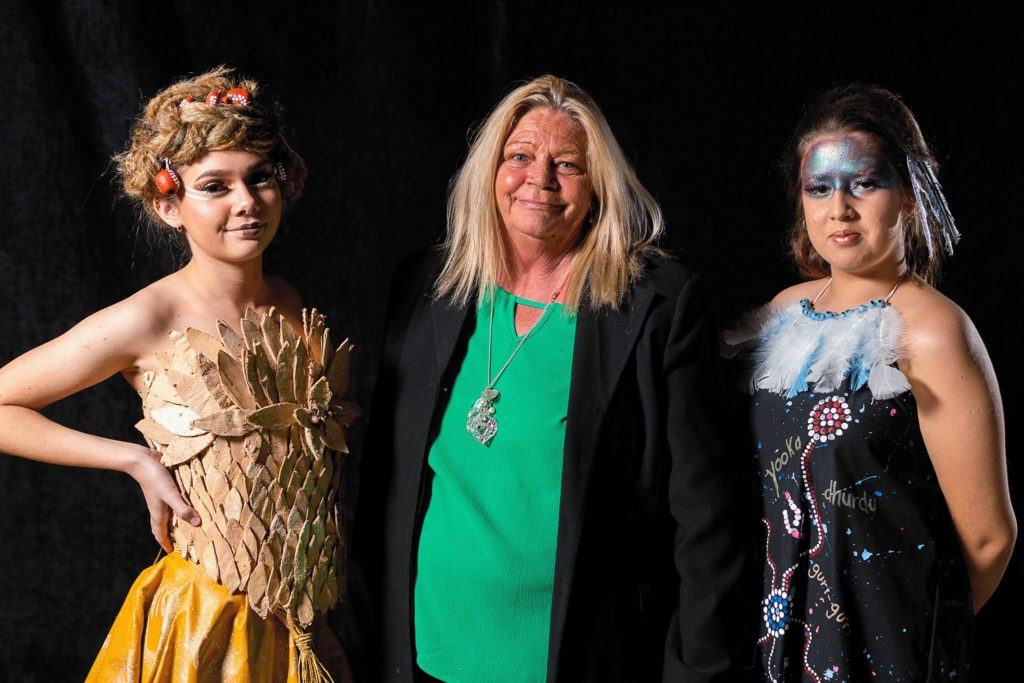
People were also given the opportunity to travel to Barcaldine to participate in make-up artistry workshops, meaning that performers also had access to local makeup artists. A dance troupe of 25 young people also participated in the performance and showcase of the costume collection.
Within every workshop, layers of physical relaxation, self-care and well-being activities were integrated for participants. These layers of integrated care were individually tailored to meet the needs of the local community. A combination of creative skills development, physical health and emotional wellbeing were important outcomes.
Events were incredibly well received by the community and the costume collection has gained ongoing and widespread interest, with a number of groups and gallery spaces enquiring about exhibiting them.
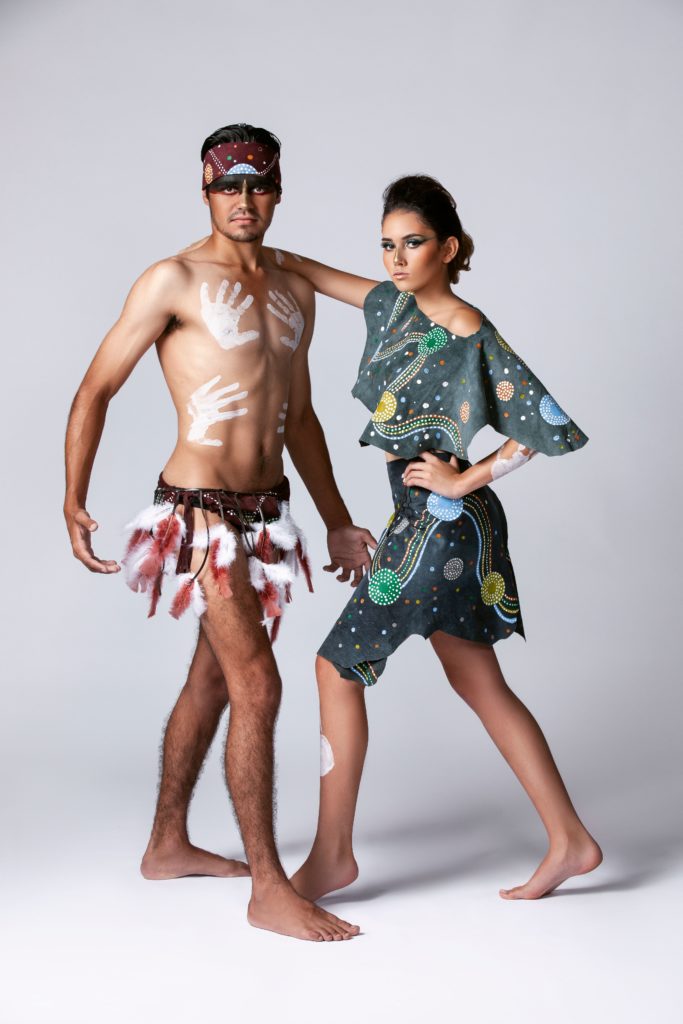
Louise Campbell, manager of the project, told FRRR this was such an amazing project that would not have achieved what it did without the FRRR grant and partner donor Tim Fairfax Family Foundation.
“The grant enabled us to deliver the best project possible that exceeded all expectations. An exhibition of garments is now hosted in the Grassland Gallery in Tambo and expected to travel across the region. Additional communities have expressed an interest in being involved in future projects of this nature.”

